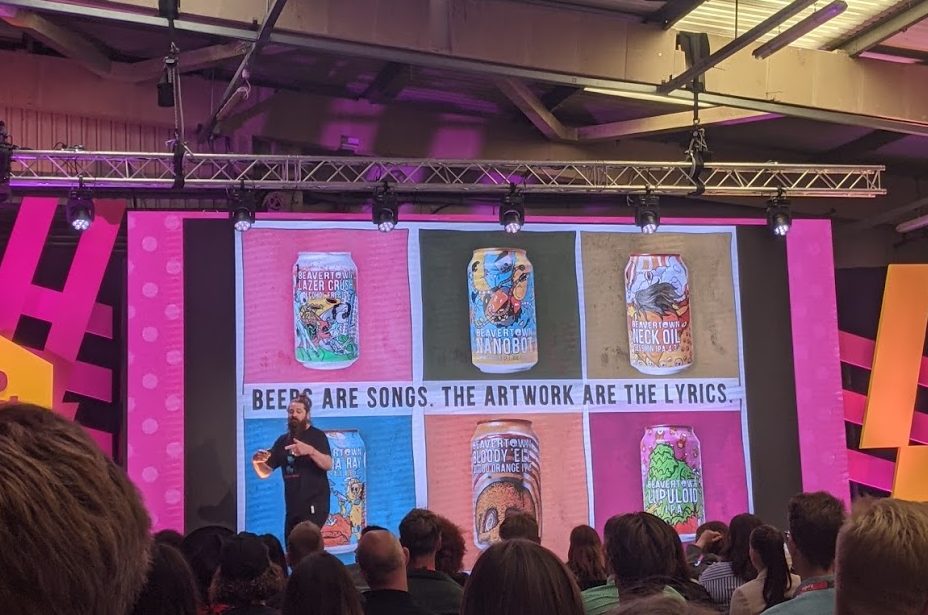Jemma had the pleasure of attending MAD Fest 2021, the first in-person conference in about 18 months! Here’s what she thought:
Last month I was back at a real-life, in-person, muddy music festival. This week I had the even greater pleasure of being back at a real-life, networky, schmoozey, insightful MARKETING festival. The excitement was palpable, albeit with nerves around remembering how to talk to actual humans in the flesh again.
There were plenty of exciting and insightful talks throughout the day, and I could talk about the best bits for hours, but here’s just a few of the things that stood out for me:
Diversity & Inclusion
This was a common theme of the day – one of the first panels of the day from BRiM centred around how we need to do more as an industry to reflect the diverse society in which we live. I was shocked to hear that representation of black people in the marketing industry is at just 3%, with many of the black talent within the industry facing discrimination and even considering leaving the industry because of this. BRiM are doing some great work to help the industry to improve – not just in terms of how people are represented in advertising, but also looking behind the camera, ensuring we have a diverse and inclusive workforce. This was something June Sarpong and her panel touched upon later in the day, discussing the benefits of a diverse workforce and the importance of ensuring companies are accommodating to individual needs. We’ve recently been working with Channel 4 to understand the advertising landscape when it comes to diversity, so it was interesting to see some common themes, giving us plenty of food for thought!
The importance of being agile
There was no escaping conversations about the impact of Covid-19. A panel featuring speakers from Malaysia Airlines, Tui and G Adventures discussed how to futureproof travel. The travel industry is used to reacting to disruption, but Covid-19 affected all parts of travel businesses, at a global level. Brands had to be agile, adapting to increased customer service calls, and changing their communications overnight from inspirational aspiring content to a focus on the nitty gritty detail. What was important across the board was ensuring the customer experience was even more a part of everything they do, becoming far more insights based to ensure they’re giving the flexibility that customers need.
Agility was also a theme for Jägermeister. As a brand intrinsically connected to nightlife, they saw massive challenges when the nightlife industry ground to a halt. Firstly, their audience was stuck at home and craved entertainment. Secondly, the community of people who make nightlife special were out of work. They saw an opportunity to allow their bored, entertainment craving consumers to connect with communities negatively impacted, booking them to appear at their lockdown parties. They launched their #SaveTheNight campaign with Meister Drop-Ins at an impressive speed, with a prototype product in just 24 hours, going to global launch in 3 weeks, hooking up consumers with anything from magicians to fashion designers, and mixologists to dancers. It was an agile, flexible approach, ensuring their agencies had the power to make decisions, and constantly monitoring and evolving the platform as time went on that allowed them to have such a success.
Acting like a Band, not a Brand
On a completely different note, the standout presentation of the day for me was from Tom Rainsford from Beavertown Brewery, (not least because he fully endorsed people stealing their glassware from bars for that all important mental availability, so I no longer feel guilty about that). Their workforce is pretty varied, but overindexing on failed musicians means they like to think like a band, rather than a brand. Challenging the status quo, creating intrigue, and creativity without exclusivity are some of the ways in which they do this. Most interestingly for me was how they think about their iconic can designs. They say that their beers are like songs, and their artwork is the lyrics. With the use of UFOs, skulls and more, their cans have a coherent feel rather than being completely consistent, respecting that their customers understand the common thread that runs through their products. Ultimately they want to create fans, not just customers, and who knows, maybe future KPIs will include the number of brand tattoos, instead of the usual metrics.
It was surprising just how quickly it felt normal to be back in a busy bustling conference space, but I can’t wait for more of the same. Huge thanks to the MAD Fest team for an excellent day out (and for the Dishoom and Campari refreshments…)


